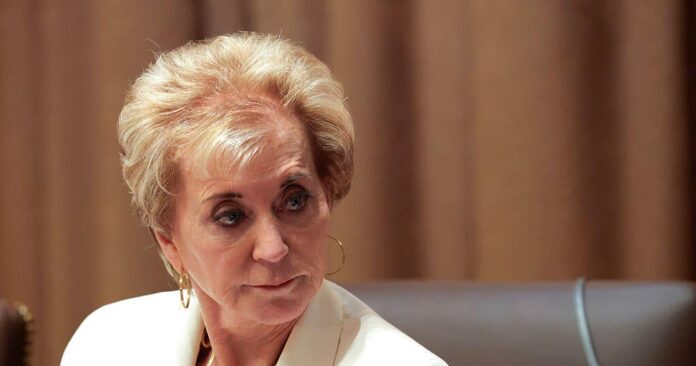Education Secretary Linda McMahon told CBS News on Tuesday that federal money to support low-income students and special education will continue to flow as the Education Department shifts some of its grant programs to other agencies, amid the Trump administration’s push to wind down the department altogether.
The agency announced Tuesday that the Department of Labor will now manage many of the Education Department’s grants to elementary and secondary schools, including the Title I program, which hands out billions of dollars to aid schools with large numbers of low-income students.
A handful of other shifts were also unveiled Tuesday. Certain higher education grants will be moved to the Department of Labor, the Department of the Interior will now handle Native American education grants, the State Department will run some international education programs, and the Department of Health and Human Services will take over a small child care grant program and a panel that reviews foreign medical schools.
McMahon said the department has not decided how to handle some of its other major responsibilities, including its special education grants and its Office for Civil Rights.
But programs that support low-income students, students with special needs and civil rights will remain in place, even if they’re moved to different agencies, McMahon told CBS News chief Washington correspondent Major Garrett on “The Takeout.”
“They will all still be done,” McMahon said. “They were done before there was a Department of Education, and they will continue to be done.”
“Special education will not be abandoned,” McMahon added.
She said the Education Department will still oversee the programs that are being moved to other agencies, and their funding will come from the department’s budget.
McMahon said permanently moving the Education Department’s responsibilities elsewhere would require congressional approval. But the department has argued that it does have the legal authority to essentially contract out some of its duties to other parts of the federal government.
She referred to the moves as a “pilot program” and a “proof of concept.”
“I want to prove to Congress that these transfers of programs are more efficient and that they work,” McMahon said. “And so if we can do that, then hopefully … we can get Congress to vote and to codify those transfers and make it a permanent move.”
President Trump has taken aim at the Education Department for months, signing an executive order in March directing the department to start closing itself down to the maximum extent required by law. The department has also moved to slash its workforce.
The administration has argued that the Department of Education is overly bureaucratic and many of its tasks should be overseen by states and localities.
“The Trump Administration is fully committed to doing what’s best for American students, which is why it’s critical to shrink this bloated federal education bureaucracy while still ensuring efficient delivery of funds and essential programs,” White House spokesperson Liz Huston said Tuesday, adding that “students and teachers don’t need Washington bureaucrats micromanaging their classrooms.”
Tuesday’s moves drew pushback from the American Federation of Government Employees, which represents thousands of Education Department staffers.
“Students, educators and families depend on the Department’s comprehensive support for schools, from early learning through graduate programs,” the union said in a press release that called the changes “unlawful” and an “insult” to students. “That national mission is weakened when its core functions are scattered across other federal or state agencies that are not equipped or positioned to provide the same support and services as ED staff.”
Linda McMahon, United States Department of Education
#McMahon #federal #school #aid #flowing #Education #Department #hands #duties #agencies

